Small Flies For Big Steelhead
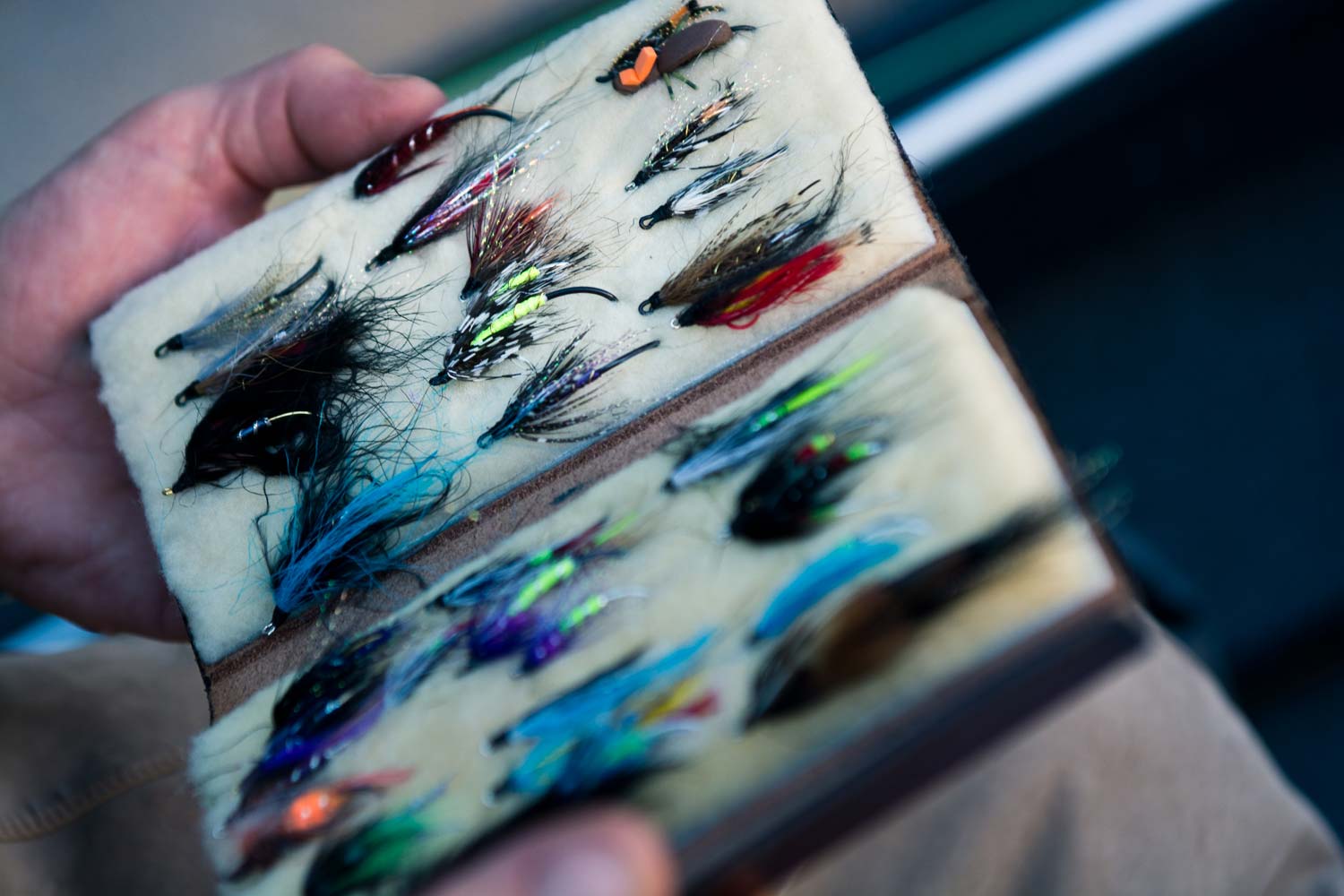
“Most people think, to catch a big fish you have to tie on a Woolly Bugger.” – Christopher Guest
Every year some fly fishing magazine publishes an article about fishing small flies for big fish. The quote above, from Christopher Guest’s 2000 film “Best In Show,” cracked me up because I had read the article in Fly Fisherman that he went on to quote word for word. If you are not familiar with the film, I highly recommend it.
I wouldn’t say it’s news that small flies catch big fish. Of course, big flies catch big fish, too, and an effective angler is the one who knows how to match the size of their fly to the conditions. Fly size alone is not a guarantee of catching fish, large or small. When it comes to summer steelhead, there are some pretty good reasons to consider sizing down.
It’s pretty well documented that summer run fish will eat flies who’s size might be more associated with resident trout. There are plenty of theories about why that is. I’m a pragmatist, and I think it’s likely they eat them for the same reason the trout do. Because they more accurately resemble what the fish see around them.
Fishing a big squid pattern to a winter fish, who has likely only been in fresh water for a day or two makes sense. Summer fish spend months in the river. They wouldn’t have seen a lot of squid around but they are likely seeing a lot of aquatic insects in the size 4-8 range. Unlike trout, the steelhead is not feeding, but it would be foolish to think that flies are the only thing they are snapping at. For whatever reason they bite, they bite what’s at hand, so imitation makes sense.
Small flies, especially on a floating line, are a pleasure to cast, which is reason enough to give them a try. The main reason I like fishing these flies on a floating line is the way
Read More »Reel Balance
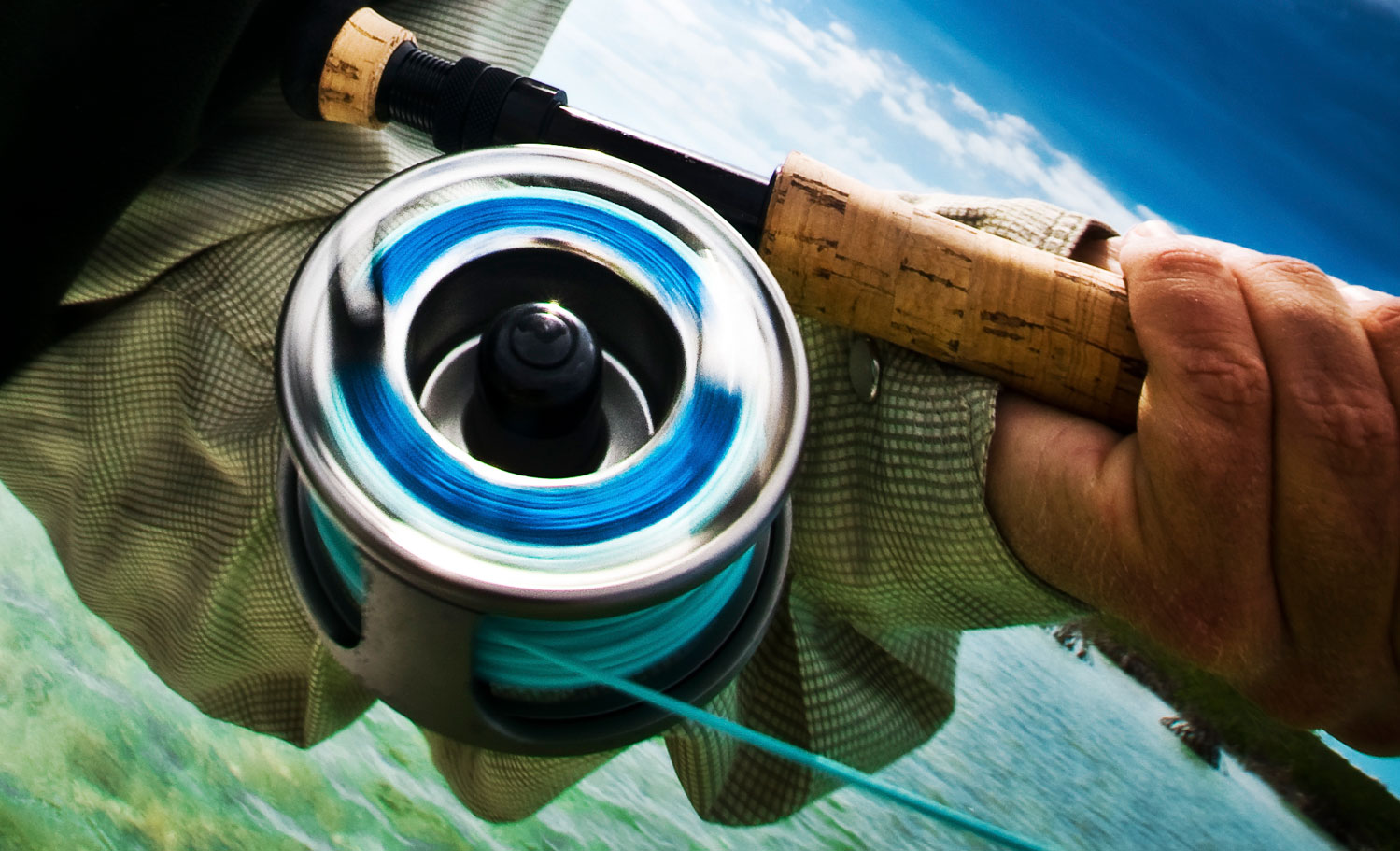
HAVE YOU SPENT MUCH TIME THINKING ABOUT THE COUNTERWEIGHT ON YOUR FLY REEL? SOMEONE HAS.
Odds are good you haven’t spent a lot of time thinking about that little button opposite the handle on your fly reel. Some of you may have thought it was just there for decoration. Well, it isn’t. The counterweight is actually a really important piece of your reel’s design and without it you’d be in trouble.
Think of it like the lead counterweights on your car tires. When you buy a new set of tires the guys at the tire shop balance each of them once they’re mounted on the rims. Without those counterweights your car would feel like it was driving a washboarded forest service road all the time. Your reel works the same way.
Without a counterweight every time you hooked into a fish big enough to pull some serious line, your reel would buck and vibrate like that car tire that’s out of balance. That would cause a couple of things and none of them good.
The jerking motion of the rod caused by an out of balance reel would cause you to lose fish, either by breaking them off or dislodging the hook. It would also cause extra wear on the reel shortening its life. It would also be annoying as hell causing you to throw the reel as far as possible.
It’s easy to understand why a reel needs to be balanced. What’s tougher is actually balancing one. It’s a surprisingly tedious process. The slightest change in the length of the handle makes a big change in the counterweight. There are formulas, but reel balance only comes from a process of trial and error.
When I was at the Nautilus factory a few weeks ago my friend Kristen Mustad showed me how they balance Nautilus reels. It’s pretty clever and a great example
Read More »9 Tips for Netting Big Fish on Your Own
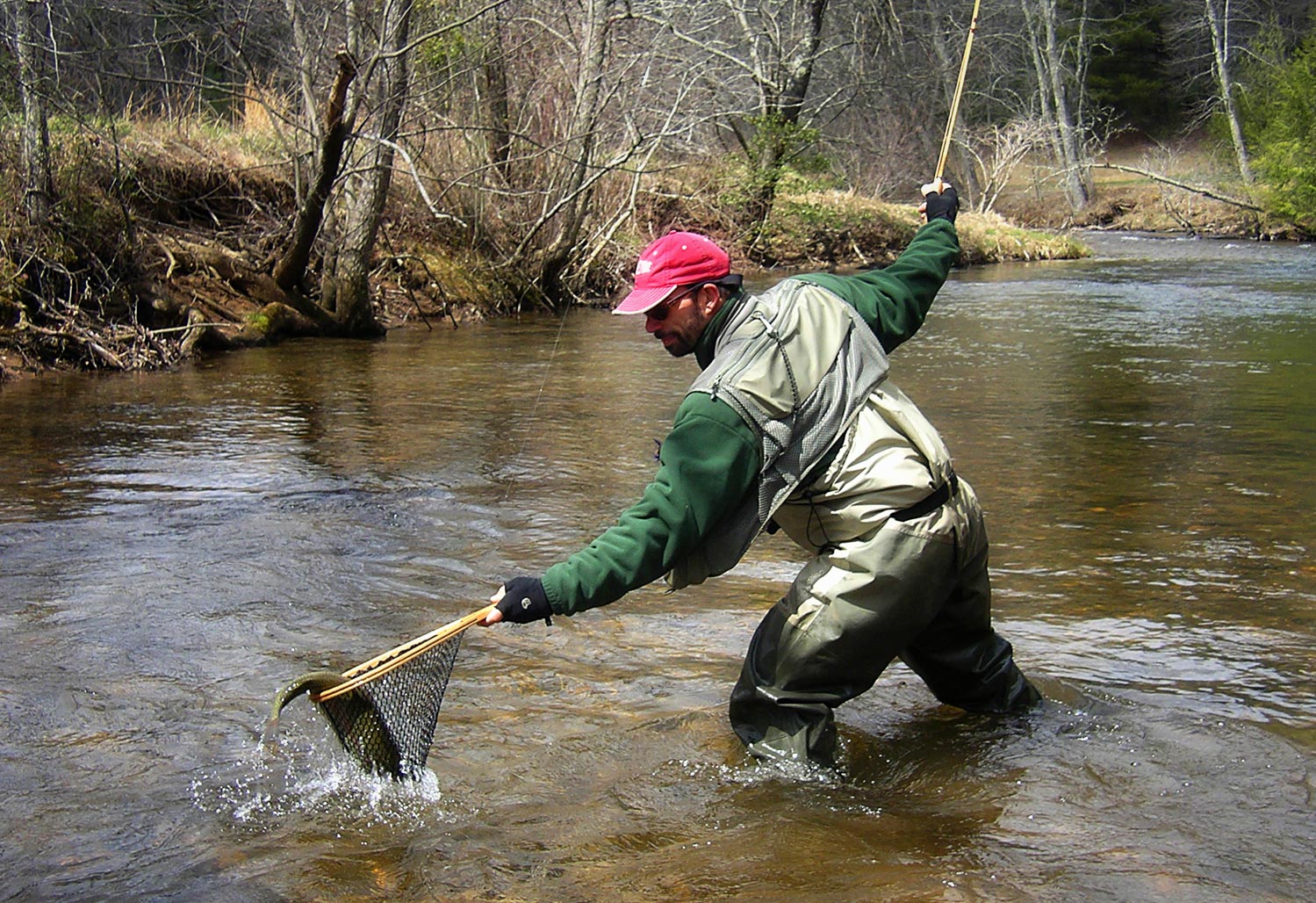
ELATION, PANIC AND EPIPHANY. THAT’S THE USUAL ORDER OF EMOTIONS WHEN AN ANGLER LANDS THEIR FIRST BIG TROUT.
I had the pleasure of seeing a dear friend land his first trophy trout recently and I think that’s a pretty fair description. I think it’s pretty common for anglers landing their first plus-size fish to think, “Oh shit! What do I do now?” To the guy who is used to dangling a fish by the tippet, scooping an angry, hook-jawed behemoth with a trout net is daunting. Once you’ve done it a few times it becomes second nature but for those who are struggling (or yet to struggle) with it, here are a few tips.
Timing is everything
Netting a green fish, a fish who isn’t ready, is a losing proposition. On the other hand, playing a fish too long can kill them. Not to mention give them ample opportunity to unbutton. As long as a fish is holding himself upright in the water and keeping his head down, he is not ready for the net. Once he rolls on his side and comes to the surface, it’s time to net him. The first time this happens he may right himself again and make another run. The second time you should be ready to seal the deal.
Net the fish at the surface
As long as a fish has his head submerged he is in control. If you try to scoop a fish below the surface your odds are very poor. He can turn quickly to make his escape and there’s a good chance that you will catch the line with the net and break him off. Lift your rod tip high as you reach for the fish and keep his nose out of the water. As long as his nose is dry he can’t make a break for it.
Net the head
Don’t try to scoop a big fish from behind. You might
Glass and Grass
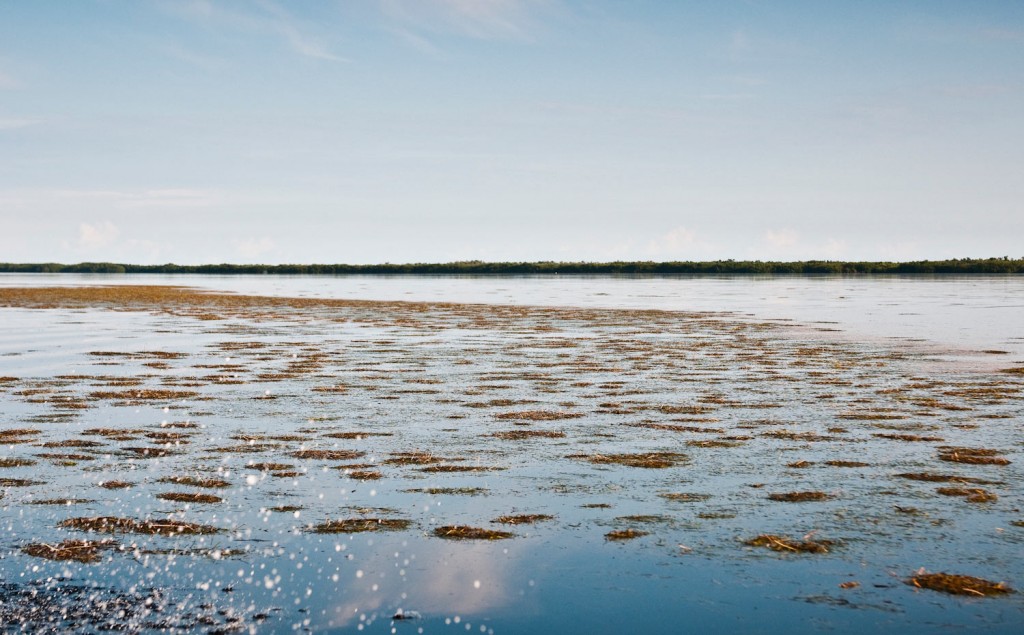
THIS IS A SIGHT FLATS GUIDES LOVE. THOSE GLASSY CALM MORNINGS DURING THE HOT SUMMER MONTHS WHEN ISLANDS OF FLOATING GRASS STACK UP ALONG THE EDGES OF CURRENT SEAMS. WHEN YOU SEE IT YOU KNOW SOMETHING GOOD IS ABOUT TO HAPPEN. IT’S CALLED A SHRIMP HATCH.
Hatch is a misleading term. The shrimp aren’t actually hatching, they’re dying. Suffocating to be exact. Like a trout stream, the water in the ocean must be replenished with fresh oxygen for aquatic life to survive. The ocean however, does not have riffles turning out oxygen around the clock. Aquatic plants provide some oxygen through photosynthesis but not at night, so the ocean relies heavily on wind to oxygenate the water when the sun is down. This becomes even more crucial as water temperature rises. Since warmer water holds less oxygen it must be replenished more often.
On those still hot nights the shrimp are suffocating and leave the safety of the turtle grass to look for oxygen on the surface. There, they are an easy
Read More »Rosa Parks Fished Streamers
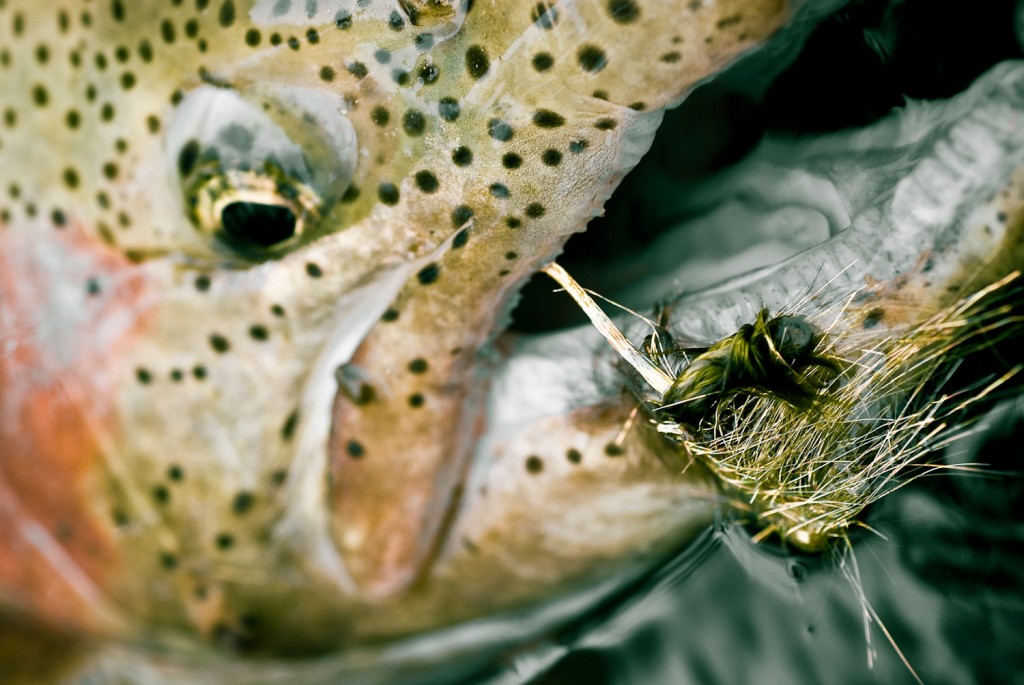
Stand up with me here streamer guys, you know what I’m talking about!
First of all I am in no way making light of Ms. Parks courageous acts or life of service. She is on my list of personal heroes and that list is pretty damn short. If you don’t know who she is, you should! That said, like Rosa, I’m getting pretty fucking tired of the back of the bus.
Stand up with me here streamer guys, you know what I’m talking about. Every time I get in a drift boat with a streamer rod I get stuck in the back of the boat. (I’m not picking on you here BW, everybody does it.) There’s always one of your buddies who pipes up with, “I sure would like the chance to catch one on a dry before you scare the hell out of ’em with that thing.”
I have a couple of problems with this horse shit. The first being, streamers do not spook fish. If they do, explain to me why fish eat them. Not just big fish, I routinely catch fish barely bigger than my streamer.
The primary reason that streamers do not spook fish is that fish are not afraid of things that are under water. Ask anyone who has snorkeled. If fish don’t spook at the sight of a person under water a fly isn’t going to phase them. I know one guide on the Snake River who, in the fall, prefers to have a streamer fisherman in the bow and a guy throwing hoppers in the back. His theory is that the streamer gets the fish worked up and ready to eat. It works, too.
I’ll say it again, streamers do not spook fish!
Secondly, it’s just a matter of etiquette. I put my time in on the oars like everybody else. When you get off the sticks, you go to the bow. That’s how it works, that’s your reward.
What the dry fly guy in the bow doesn’t get is that I’m making about ten times as many casts as he is. I’m working with a huge amount of line at my feet, getting hung up in the plugs or around the seat, getting grit all over it from the floor that cuts my fingers when I strip. That deck in the front of the boat was made for streamer fisherman. It’s for holding line, not your beer. Don’t even get me started on trying to get the oarsman to position the boat for a streamer guy. That’s never going to happen.
All that aside, here’s what really chaps my ass. Here’s what’s really going on. It’s not about me spooking fish or etiquette. Just like Rosa, I’m being treated like a second class citizen. I’m fishing from the back of the boat because the dry fly guys think they are better than me. They think that God handed down the #20 Elk Hair Caddis to them and my four inch streamer and I are a perversion and should only be allowed in Massachusetts. They think I’m doing it wrong.
If you’ve been reading my ravings for long, you already know that this kind of snobbery makes me crazy. I don’t know what it is about a fly rod that makes some people feel like they have to tell everyone else how to fish but it happens with amazing regularity. I get it, you’ve put a lot of time in learning how to fish and you feel like you have it figured out but here’s the thing, there’s more than one way to fish and none of them is the “right way.”
I love streamers and I make no apologies for it. The visual aspect of streamer fishing can’t be beat. To me, there is nothing better than watching a big trout rocket out of the shadows to chase down my streamer. I love to watch them come up from behind, then veer off and come back to broadside my fly. I like seeing their
Read More »Make Better Roll Cast: Video
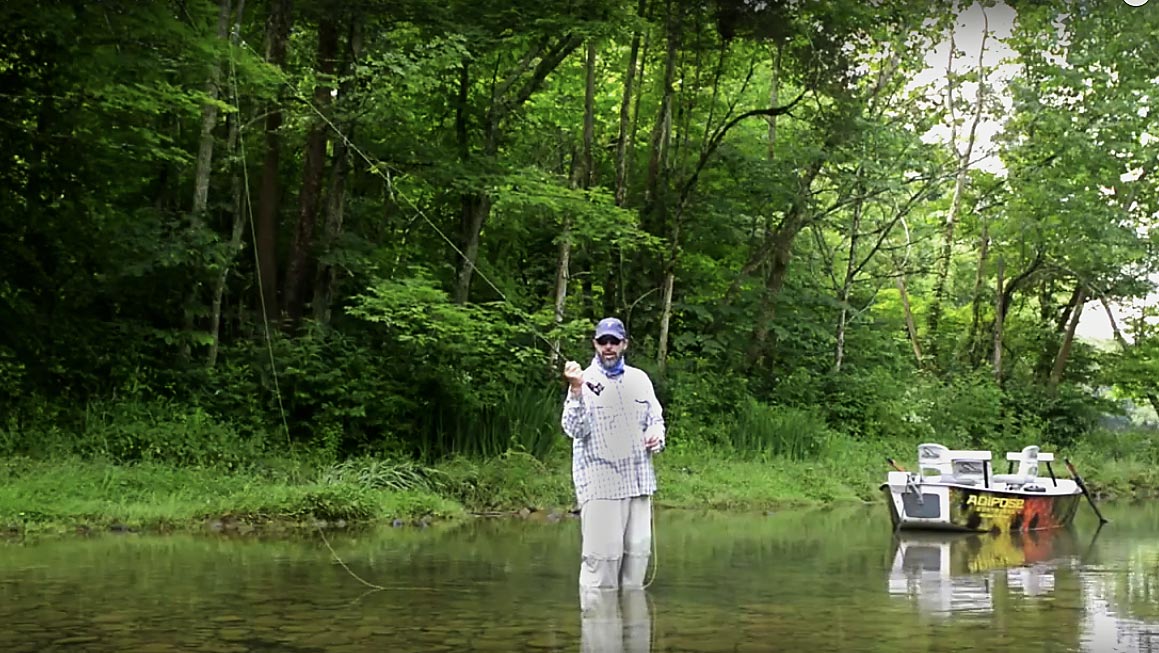
It isn’t flashy, but a good roll cast will catch you a lot of fish you might otherwise miss.
Roll casting is an essential skill for any angler, especially those targeting trout. Many of the mountain streams where trout live have little room for a backcast. A good roll cast opens up a lot of water that’s unfishable by any other means. It’s usually one of the first casts an angler learns, and because their understanding of fly casting is limited, anglers often learn the cast poorly. Very few go back and fix the problems they developed early on.
A FEW OF THE SKILLS WHICH ARE KEY TO A GOOD ROLL CAST ARE:
Making a robust D loop.
Keeping the path of the rod tip flat on the casting stroke.
Smooth acceleration of the cast to an abrupt stop.
Once you have the basics of the cast down, you can add a haul and shoot line for more distance. Roll casting this way is very effective on all types of water.
WATCH THIS VIDEO AND LEARN TO MAKE A BETTER ROLL CAST.
Read More »A Michigan Guide Prepares For Winter
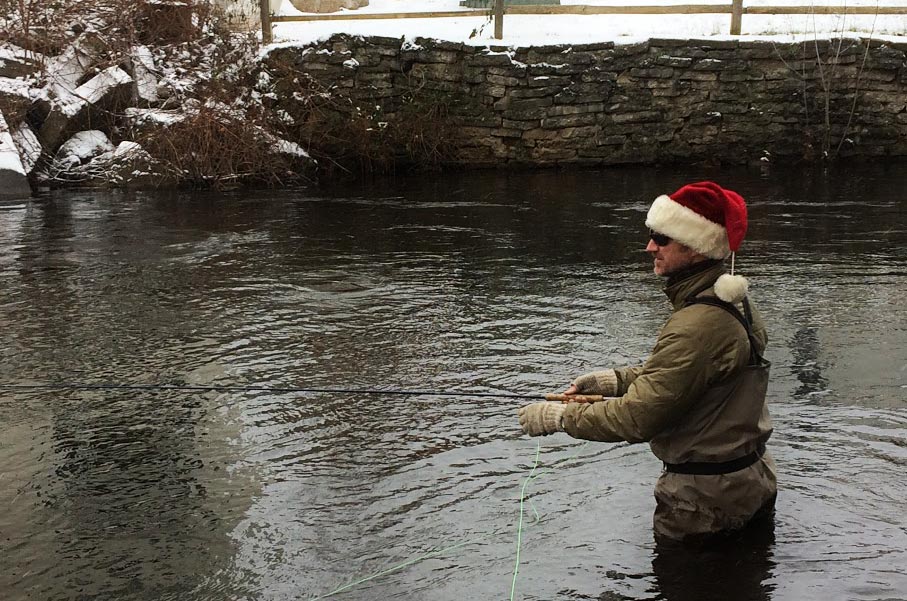
By Brian Kozminski
Just got off the phone with a fellow fishing buddy who is a few states south of Michigan. I could immediately tell the genuine giddiness in his voice over recent tracks in the woods and excitement for the fishing season immediately in his focus. At first, I was caught off guard, “What do you mean? We are storing boats, raking, shoveling, blowing out water lines, switching the lawn mower and placing the snow blower in pole position in the garage.”
It is a much different story north of the 45th in Michigan. We can see hard water on many lakes in time for a Christmas bluegill fish fry fresh from the ice. Be careful. Many anglers jump the gun on first ice bite and inevitably find that spring and thin ice with a rather frigid bath to accompany. I will wait until my girls are home for Holiday break before we trek out and drill a few holes looking for some panfish or burbot. There are many other activities keeping my focus at full attention.
Long & Dusty road~
Rod and reel maintenance is foremost. Not that we are totally done with fly fishing, we have a streamer fest scheduled first week in December in hopes of finding a post spawn mega-tron brown in the Trophy waters. It has been a long and, at times, arduous summer; back-to-back trips for weeks and mixing in family time at the beach left some of my equipment neglected. I have set a large towel on my workbench to break down reels, toothbrush in hand and 3-in-1 oil to make sure all levers and cranks are at peak performance for next season. Lines are stripped into a bucket of warm soapy water, wrung through a microfiber cloth and dried, awaiting dressing at the next stage.
Fly boxes can become a task, so try to keep it simple. I have a large Cool Whip container filled with ‘past-prime’ flies that I will either de-hook and use for kids casting events or adorn on a few of my favorite fishing hats. This is also a perfect time to take inventory on what was used and what I need to either tie this winter or prepare a massive order from various favorite fly tyers. The Weather Underground app is a daily ritual; one eye on the coming forecast in hopes of a 45º streamer bite in the middle of a twenty-something daytime high can get any of us excited.
The Vessel~
Keep that float in shape and she will take care of you for more than a couple of seasons.
Read More »Forget About Competition And Focus on Teamwork
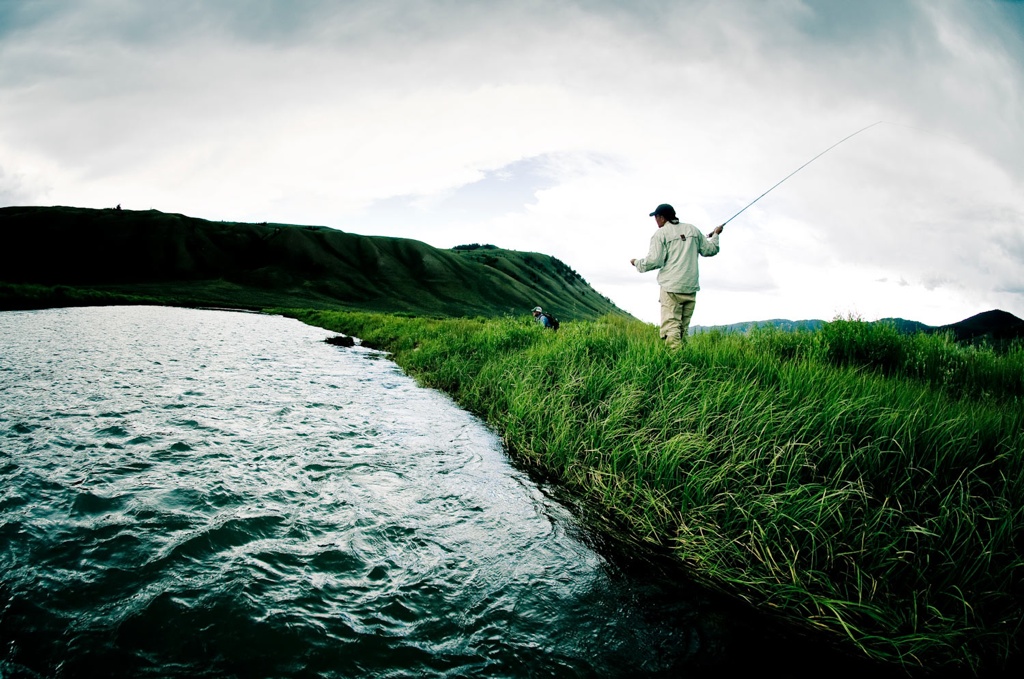
Like many anglers, I enjoy a friendly competition on the water with my buddies.
However, if you get too wrapped up in the competition aspect, often it can get out of hand and ruin your day of fishing. These days I try to forget about competition and who’s catching what. It’s just not important to me anymore, and I instead prefer to focus on teamwork. Teamwork usually yields better fishing results anyway, and it also seems to build camaraderie much better than competition. Below are three reasons I choose teamwork over competition in my fishing.
1. Working as team on the water allows you to dial into the current fishing conditions much quicker.
Read More »Assault on Omaha Beach, a Study in Finding Carp
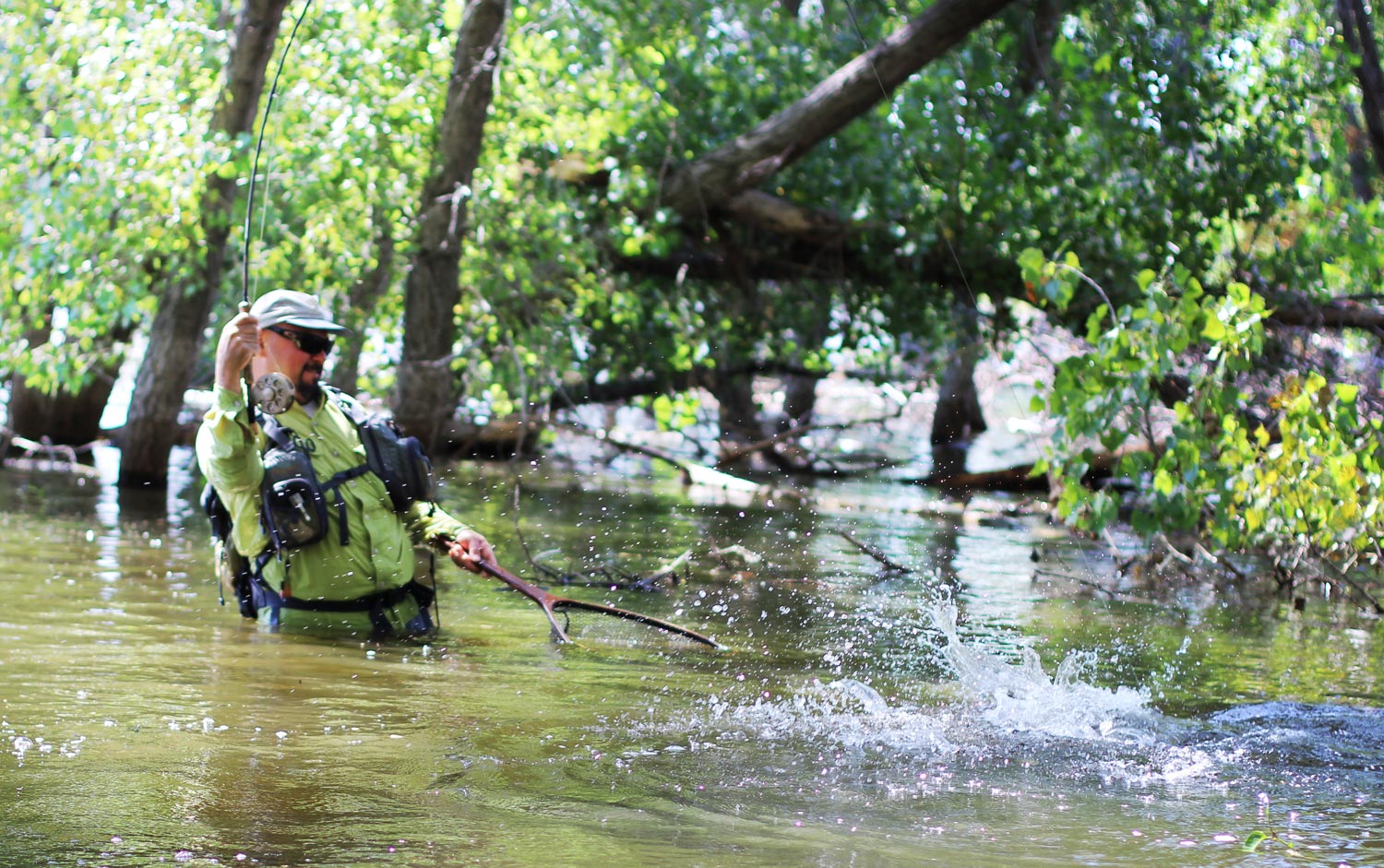
How to locate carp on new water, that are accessible to a flyrodder.
I’ve been banging around ideas in my head for how to write a piece describing the best way to locate carp. Frankly, I’ve been struggling a little bit. The problem is, I can look at a satellite map, or walk up to a body of water and have a pretty good idea of what looks carpy. I just don’t know how I know. Then I got a phone call from McTage Tanner last Tuesday.
“Let’s explore Lake McConaughy. I think it could become an A level destination for carp fishing.”
We’d discussed McConaughy before. This massive reservoir lies in the heart of the Nebraska Sandhills where the damming of the North Platte River created a 120-foot deep, 20,000-acre monster lake. Once the home of stripers and still a trophy walleye and trout destination, this behemoth, bottom release reservoir is massively productive; growing trout in its tailwaters at the rate of an inch a month. Ten-pound trout are caught there frequently but it wasn’t the trout we cared about. We did like the idea of clean, highly productive water, situated on a sand bottom holding healthy populations of carp. This could, indeed, be a special place.
Late night phone calls ensued, studying Google maps and soon we’d added two more PhD level carpers to the expedition. We poured through 8-year-old forum reports of carp as by-catch. Looked at bow-fishing sites and records and got anecdotal evidence from some local walleye guys. They don’t fish for carp, but they’d seen ‘em. By the time we left we knew this much, carp lived there and it was huge. Saddle up boys, this could be epic or disastrous, but it probably won’t fall in between.
I met Larry Dostal at his house in Omaha, threw my camping gear into his pickup and we were just getting on toward Lincoln when it occurred to me. For the next day and a half, I was about to do exactly what people asking me, where to find carp, are trying to do. I’m going to a new water body and searching for fish that may or may not be there.
If I paid attention, I’d find all the answers I needed for my piece. So I paid attention.
Read More »Limit False Casting to Improve Your Casting Stroke
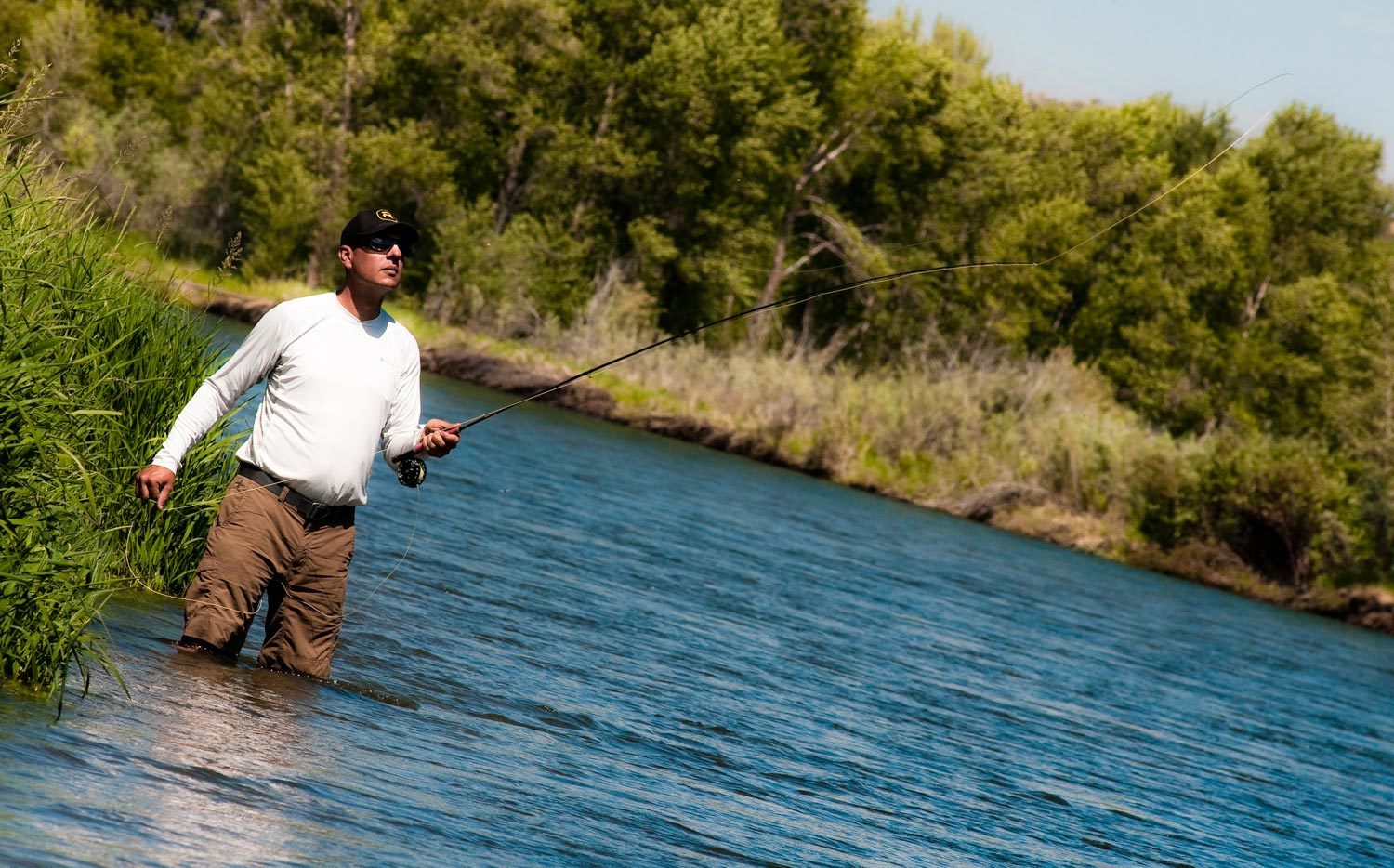
When we first start out fly fishing and we’re still learning the mechanics of the casting stroke, it’s very common for many of us to make excessive false casts in between our presentations.
For some of us, excessive false casting is an excuse to impart quality control during our fly casting, for others, we justify it for the simple fact that we just love casting a fly rod. Whatever the reasons may be for excessive false casting, it needs to be kept in check, if anglers wants to fly fish at their best. If you’re currently in the beginner or intermediate skill level range, one of the best ways to take your fly fishing to the next level, is to make yourself minimize your false casting on the water.
Read More »